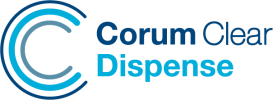What is an ePrescription?

How to dispense e-Scripts
ePrescription with e-Script offline
Print and re-issue tokens
Script queuing

How to dispense e-Scripts
Script queuing
Print and re-issue tokens
ePrescription with e-Script offline
What are the benefits of e-Scripts?
Ensuring the accurate and secure communication of confidential patient medical data is important in the reduction of transcription errors, the delivery of improved health outcomes for patients, and in reducing the likelihood of preventable adverse effects from medications.
ePrescribing provides significant time and workflow efficiencies, including reducing time spent on re-keying prescription data; enabling more time for patient consultation, and an increased focus on medication compliance.
ePrescribing improves communication between pharmacists and doctors, streamlining how owing prescriptions are managed, as well as changes in item or instructions, and last repeat notifications.

- Patient convenience
- Decreased probability of lost scripts
- Reduction in time spent re-issuing scripts
How are e-Scripts delivered?
Prescribing software allows health professionals to generate either paper or electronic prescriptions. A bar code and QR code are included on all e-Scripts which are delivered to the patient in two ways:
Method 1 - Token
- The patient receives an SMS or email containing a link to a 'token', or a hard copy paper version that includes the 'token'. The patient presents this at the pharmacy for dispensing.
- This method is suited to casual medication users with a low level of medication complexity.
Method 2 - Active Script List (ASL)
- Active Script List (ASL) is a patient controlled list of active scripts that are ready for dispensing.
- Access is controlled by the patient.
- Eliminates the risk of losing prescriptions.
- This method is suited to regular medication users.



